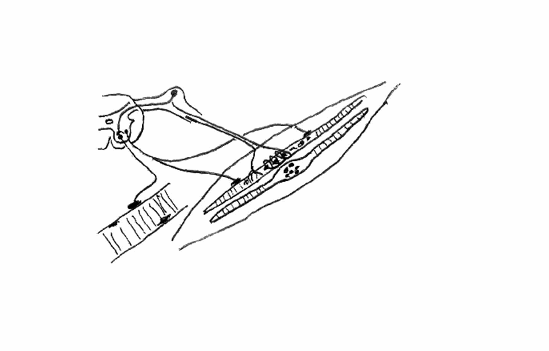Are you a Gait Troglodyte ? Are you sure ?
/Are you a Gait Troglodyte ? Are you sure ? You might want to read on.
Most of us are all still in a cave and unacquainted with some of the affairs of the world. Some of us may find ourselves behind the times when it comes to GMO foods, social media, computers and the internet, smart phones while others may be behind on world issues and politics. Heck, some of us have never even seen “Ancient Aliens” on the History Channel ! It is hard to keep up with everything in this fast paced changing world. Something has to give for each of us and so we pick our poison and decide what it is that we are going to have to remain behind on when it comes to the learning curves of the world. And this is alright, but you have to first admit your “back of the pack” and “still living in a cave” type status on the issues and take some ribbing when acknowledging your limitations. Failing to admit these inevitable shortcomings while pretending that you are still running with the pack can be a real problem. Not only are you faking yourself out but you may be deceiving those that you attempt to help.
Understanding gait, truly understanding it, is a monumental undertaking. This is why there are just no vast resources on it unlike other things in healthcare. Try going to PubMed and type in “arm swing”, you will see 318 articles. Try “pronation”, 2900 articles. Now try “heart”, 1 million+ articles. You get the point. Research is behind on gait, and thus our understanding of it is also poorly reflected in functional medicine and human bodywork. We are collectively gait troglodytes, living in stereotypical caveman times when it comes to gait. Sure there are some good books like Perry’s text, or Michaud’s landmark work but there is a void on gait work and research. Human locomotion via gait (walking and running) is a small and poorly understood component by many. It is much the reason why we started The Gait Guys and began writing daily for over 600 days on gait issues. Little did we know that the door we had opened would continue to swing so wide and encompass so many other aspects that feed into human gait.
One of the aspects that worries us the most these days is the growing volume of “functional” work that is going on in the world of therapy and training. There is a very important and critical place for this work and we fully admit that everyone needs to be on board with all of the great work that the leaders are teaching. What worries us is the apparent lack of integration of this work into gait assessment, gait therapy, and flawed gait neuro-biomechanics. Once again gait is not getting the pulpit it deserves. Yes, flaws in the functional screens and assessments need to be brought to light and remedied because they can impact bipedal locomotion but, the pendulum swings both ways. Gait can often be a cause of these functional problems that show up on the screens and assessments. If one fixes the functional pattern problems and the gait pattern is not restored then either the dysfunction will return or a new undesirable pattern will be generated. There needs to be more gait understanding and assessment from us all. Gait needs retraining as well, it is as much of a functional pattern as any other, if not more. Gait deserves a pulpit as well. Human assessment is clearly a two way street and it is not always clear who is the chicken and who is the egg. The problem may be that when gait does have its pulpit to speak from, who is the speaker ? A gait troglodyte or an expert ?
There will be folks who say we are over thinking this issue. There will be some who are offended. There will be some who cheer. There are some that will say “it will all come out in the wash” once the functional patterns are corrected elsewhere. They are wrong, it just is not that simple. Next to breathing, gait may be the second most compromised and corrupted functional pattern that humans express thousands of times daily. So, it is time to get busy. It is time to peel off your Gait Troglodyte cloak and step into a 3 piece suit when it comes to understanding and interpreting gait. If you are working in the world of human movement, locomotion, training, rehab and human biomechanics this is your next challenge. Lets face it, we can either continue to walk around with our 10 year old flip phone understanding of gait or we can step up to a smart phone understanding of gait. It is up to you, but know where you are and know your limitations. So be honest with yourself and your next client the next time you assess their gait. Be sure to ask yourself after seeing something that just doesn’t seem right in their gait, is what you see really what you are seeing ? Is that really what is wrong ? Or is it a compensation ? Do you know enough to see things for what they really are ?
Shawn and Ivo, The Gait Guys.
We may not be Gait Troglodytes……. but some accuse us of living in a cave none the less. However, if you have seen our cave, you will know it looks much like Bruce Wayne’s Batcave. It isn’t your everyday cave.



























